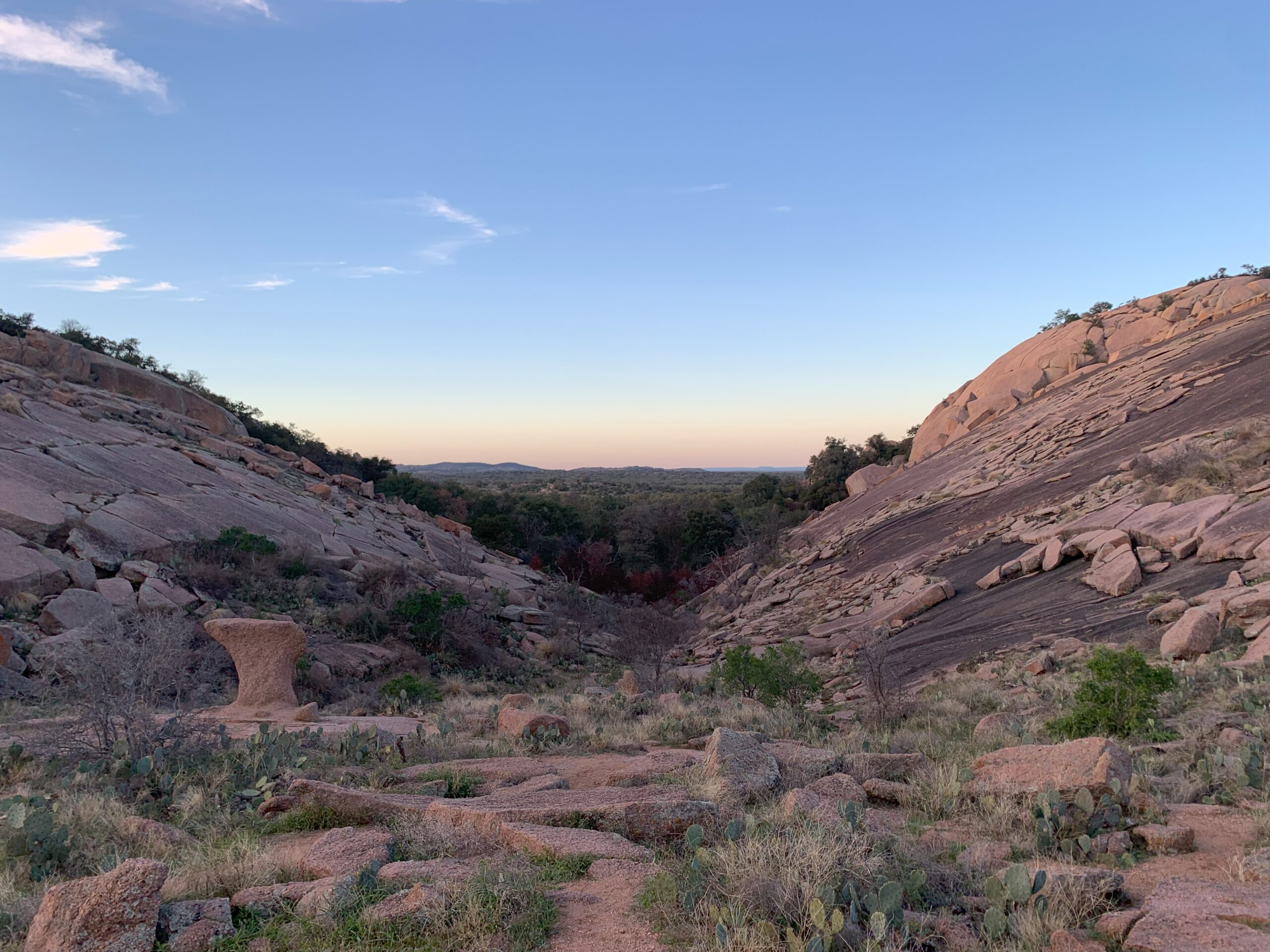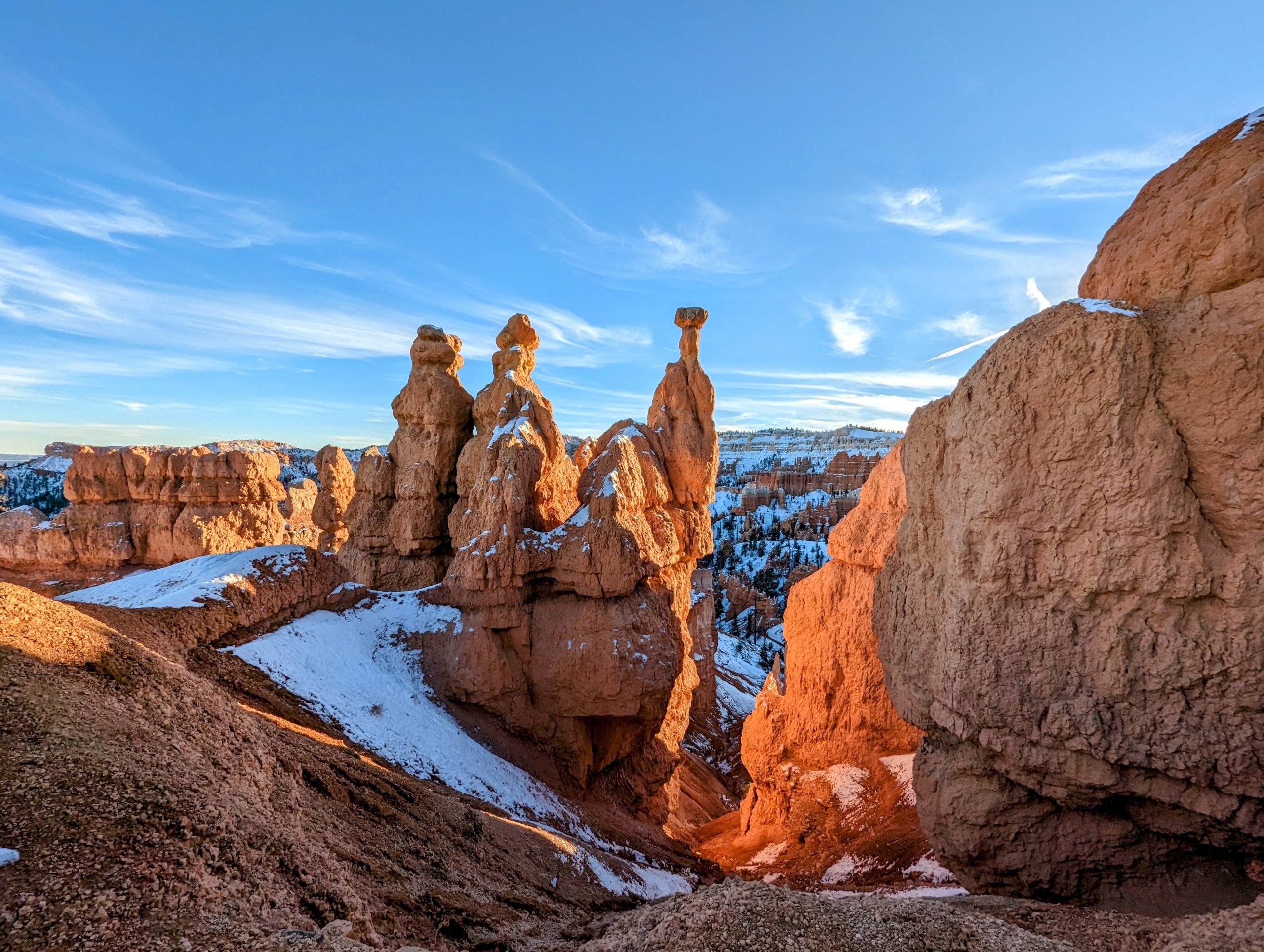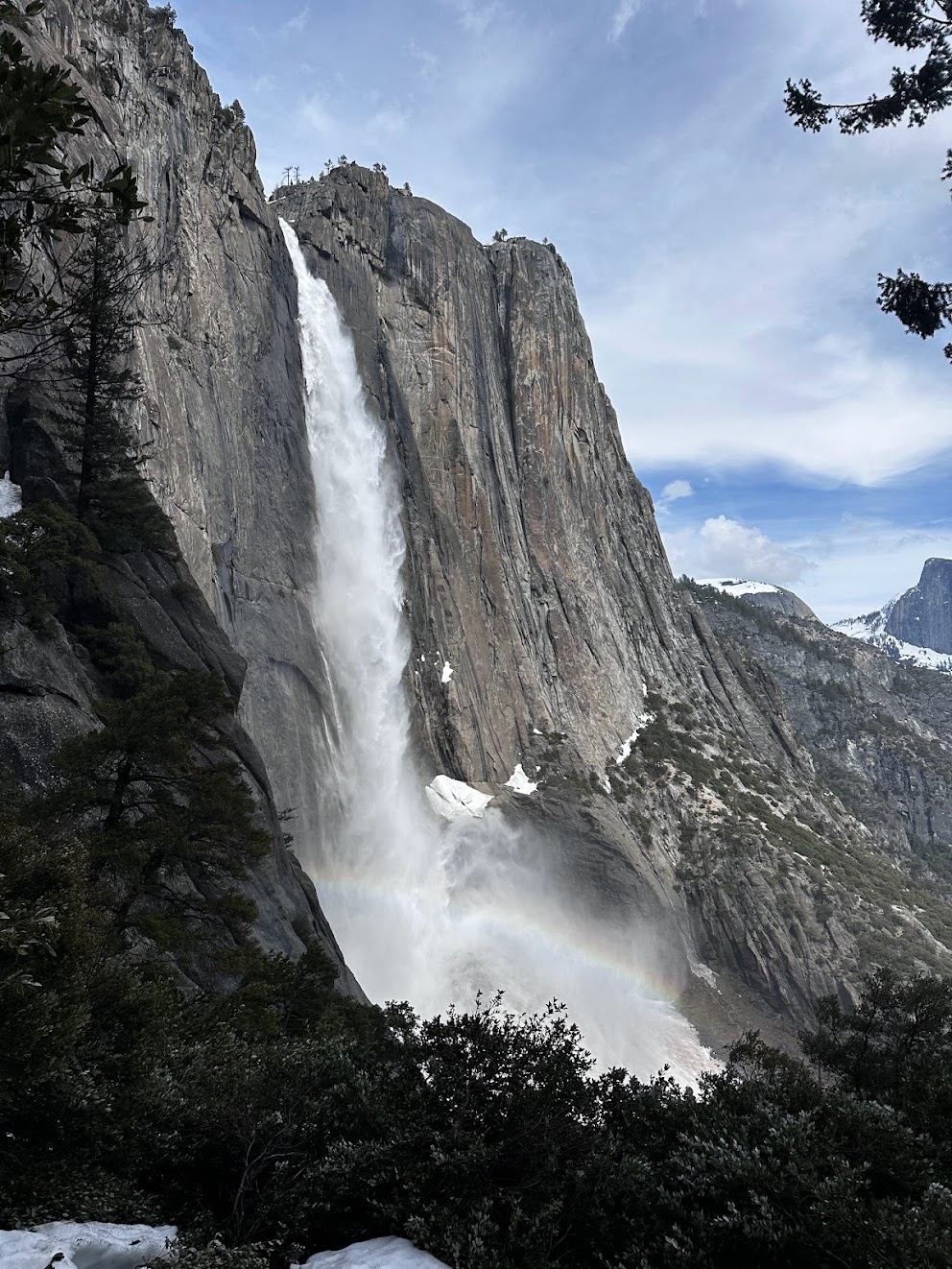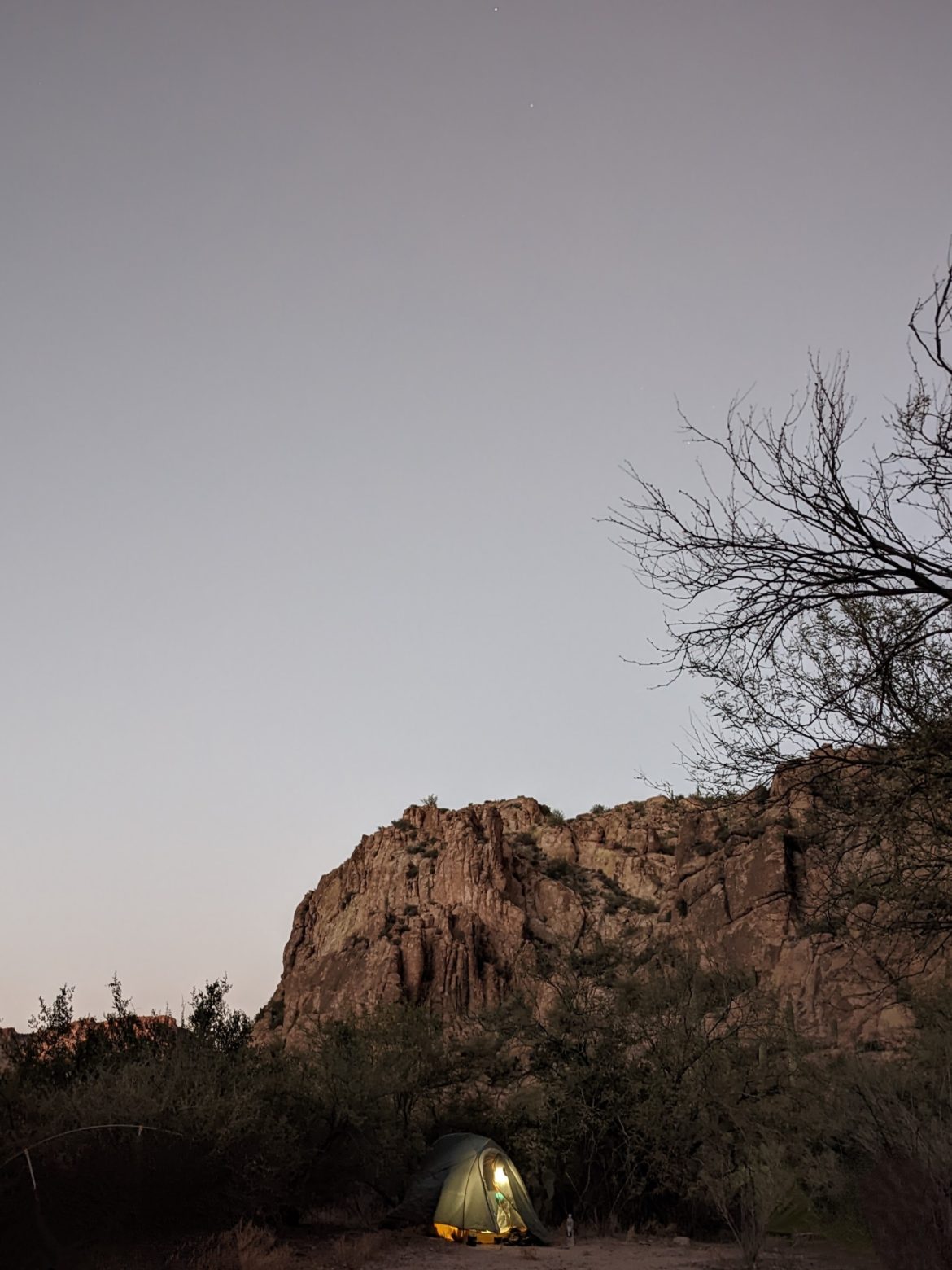Enchanted Rock State Natural Area is a protected area near Austin, Texas. While it is famous for the huge granite dome at the center of the park (Enchanted Rock), it is also well-known by the Texas rock climbing community.
If you’re eager to climb on an easy weekend trip, then Reimers Ranch, Lake Belton, and Enchanted Rock are all definitely worth your time. Lake Belton has dozens of amazing bouldering routes surrounding the lake (and sport climbing as well). Reimers Ranch has so many rope climbing routes that you’ll need multiple visits to climb everything in the park. Enchanted Rock has boulders strewn all about the park, and most of the rope climbs are located in Echo Canyon. Read on to learn more about visiting this awesome park!
Location
Download your directions to Enchanted Rock before you head out for the trip, because cell service is spotty out there. The park is located just under two hours west of Austin, and four hours southwest of Dallas.
As you reach the entrance, you’ll be driving down 965. Once you cross the cattle gates, keep an eye out for the park entrance because it’s easy to miss. If you want to camp overnight, you’ll want to check in at their welcome center and get directions directly to the campsite.

Access and Fees
Enchanted Rock State Natural Area is open from 6:30 a.m. until 10:00 p.m. However, the gate is only open until 8:00 p.m. If you make a camping reservation, you’ll need to check in by 5:00 to get the entrance code. It costs $8 per person to enter the park (children 12 and under get in free).
There are a few camping spots to choose from at Enchanted Rock. The campsites with running water cost $20/night, while primitive camping spots cost $14/night. The group campsite at Buzzards Roost costs $100 per night, but it can fit up to 50 people. The larger your group, the cheaper it is per person! The Buzzards Roost campsite also has its own private parking area.


Scenery
Once you get inside, you’ll have 11 miles of hiking trails and dozens of climbing routes to explore. The rock formations at Enchanted Rock (granite domes and giant boulders) are reminiscent of Utah’s geologic landscape. It’s tempting to go off trail and climb everything in sight – and you can do that! Some of the trails (especially the trail leading to the top of Enchanted Rock) are casually marked and allow hikers to choose their own way. Just remember that you are responsible for making good choices – not the park staff.
This natural area is an International Dark Sky Park, which means it has an extremely clear and detailed view of the stars at night. On my visit to the park, I chose to cowboy camp and sleep directly under the stars. The moon was so bright that it woke me up in the middle of the night, but the stars were gorgeous. It was easy to locate the constellations, the Milky Way and a few planets since the sky was so clear. Enchanted Rock State Natural Area even hosts “Star Parties” where you can stargaze with a group and learn about the night sky from park staff and local astronomers.



Rope Climbing
According to Mountain Project, there are 231 recorded rope climbing routes in the park. 183 of them are trad routes, 79 others are good for top rope, and the remaining 52 are listed as sport climbing routes. The difficulty ratings range from 5.5 to 5.13. Rock climbers of all capabilities can climb at Enchanted Rock – there’s something out there for everyone. Keep in mind that this park gets very busy on weekends. You might want to set out to climb early (or even camp out the night before) to avoid the crowds.
There are a few rock climbing companies nearby that provide lead climbing tours at the park. If you’re new to lead climbing or would prefer to have a guide, these companies can guarantee a safe and successful experience out on the crag. They’ll usually take you out for an 8-hour day course, and they will provide all of the gear. Their goal is to keep you safe so you can focus on having fun.
In addition to Mountain Project, you can use Enchanted Rock State Natural Area’s general list to locate climbing routes in the park.
Before you visit, learn more about climbing rules and guidelines here.

Bouldering
There are 135 bouldering routes at Enchanted Rock State Natural Area, ranging from V0 to V8. The majority of the routes are V0, which is great for beginners. Many of the V0-V1 routes felt easy and were not sandbagged (in my option). If you’re looking for a “first time climbing outside” location – this would be perfect for you and your friends.
The bouldering routes are spread out all over the park. If you camp at Buzzards Roost, there’s some bouldering near there that is isolated from the rest of the park. There is also a bouldering section west of Turkey Peak, and more routes can be found on the Echo Canyon trail. You can easily spend an entire day hiking around with your bouldering pads and climbing whatever seems interesting.



Rock Types
Most of the rock at this park is granite. Unlike limestone, granite tends to erode more slowly and maintain their texture for a longer amount of time. Some limestone climbs in Texas can be super slick – especially in humid weather. On the other hand, granite is very hard and strong. The granite holds at Enchanted Rock are usually less slippery, but might also be sharp and wear out your hands more quickly. It’s well-suited for trad climbing until it starts to erode.
You can climb at Enchanted Rock throughout the year, but the most popular season for climbing is the winter. In Texas, the coldest time of year will almost never go below 30 degrees Fahrenheit. From November to March, it will float around 50-60 degrees at the warmest parts of the day, which is great for climbing!


Why is it called Enchanted Rock?
The biggest dome in the park, Enchanted Rock, is pure granite. Apparently, granite makes creaking and groaning sounds as it heats up and cools down. Since the 1800s, this rock has been included in myths and legends in central Texas. The indigenous people of the area told stories of ghosts and spirits, inspired by the sounds coming from the dome.



